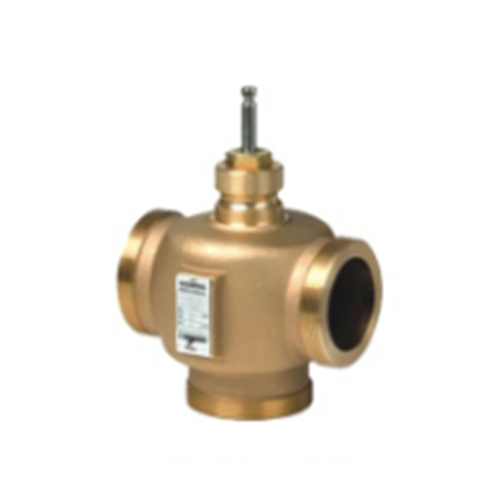
Gate Valve Manufacturing Process and Quality Control
1. Introduction
Gate valves are essential components in fluid control systems, widely used in industries such as oil and gas, water treatment, power generation, and chemical processing. Their primary function is to allow or block the flow of fluids with minimal pressure drop when fully open. The manufacturing process of gate valves involves precision engineering, material selection, machining, assembly, and rigorous quality control to ensure durability, leak-tightness, and operational efficiency.
This document outlines the detailed manufacturing process of gate valves, including material selection, machining, assembly, and testing, followed by an in-depth discussion on quality control measures to meet industry standards.
---
2. Gate Valve Manufacturing Process
2.1 Material Selection
The choice of materials depends on the application, fluid type, pressure, and temperature conditions. Common materials include:
- Body & Bonnet: Carbon steel, stainless steel, cast iron, alloy steel, or duplex stainless steel.
- Gate & Seat: Hardened stainless steel, stellite, or tungsten carbide for wear resistance.
- Stem: Stainless steel (AISI 410, 316) or alloy steel with corrosion-resistant coatings.
- Seals & Gaskets: PTFE, graphite, or elastomers (EPDM, NBR) for tight sealing.
Material certification (e.g., ASTM, ASME, EN standards) is mandatory to ensure compliance with industry requirements.
2.2 Casting or Forging
The valve body and bonnet are typically produced via casting or forging:
- Casting: Sand casting or investment casting is used for complex shapes. The molten metal is poured into molds, cooled, and then cleaned (shot blasting, grinding).
- Forging: Provides superior strength and is preferred for high-pressure applications. Hot or cold forging processes shape the metal under high pressure.
Post-casting/forging, components undergo non-destructive testing (NDT) like X-ray, ultrasonic, or dye penetrant inspection to detect internal defects.
2.3 Machining
Precision machining ensures dimensional accuracy and surface finish:
- Turning & Milling: CNC machines shape the valve body, bonnet, gate, and stem to exact tolerances.
- Drilling & Tapping: Bolt holes and threaded connections are machined.
- Grinding & Lapping: Critical sealing surfaces (seat, gate) are ground and lapped to achieve a smooth finish for leak-tight sealing.
2.4 Surface Treatment
To enhance corrosion resistance and durability:
- Electroplating: Chrome or nickel plating on stems.
- Passivation: For stainless steel components to remove free iron and improve corrosion resistance.
- Painting/Coating: Epoxy or powder coating for external protection.
2.5 Assembly
Components are assembled in a controlled environment:
1. Seat Installation: The seat ring is pressed or welded into the body.
2. Gate & Stem Assembly: The gate is connected to the stem, ensuring smooth linear motion.
3. Bonnet Attachment: The bonnet is bolted or welded to the body with gaskets for sealing.
4. Packing & Gland Installation: Stem packing (graphite or PTFE) is installed to prevent leakage.
5. Actuator Mounting (if applicable): Electric, pneumatic, or hydraulic actuators are fitted for automated operation.
2.6 Testing & Inspection
Before shipment, each valve undergoes rigorous testing:
- Hydrostatic Test: The valve is pressurized with water (1.5x rated pressure) to check for leaks.
- Pneumatic Test: Air or nitrogen is used for low-pressure sealing tests.
- Functional Test: The valve is cycled (open/close) to verify smooth operation.
- Final Inspection: Visual, dimensional, and NDT checks ensure compliance with specifications.
---
3. Quality Control in Gate Valve Manufacturing
3.1 Incoming Material Inspection
- Chemical Composition Analysis: Spectrometry verifies material grades.
- Mechanical Testing: Tensile, hardness, and impact tests confirm material properties.
- Dimensional Checks: Raw materials are measured against drawings.
3.2 In-Process Quality Control
- Dimensional Verification: Critical dimensions are checked at each machining stage.
- Non-Destructive Testing (NDT):
- Ultrasonic Testing (UT): Detects internal flaws in castings/forgings.
- Dye Penetrant Inspection (DPI): Identifies surface cracks.
- Magnetic Particle Inspection (MPI): Used for ferromagnetic materials.
- Surface Finish Inspection: Roughness testers ensure sealing surfaces meet requirements.
3.3 Final Quality Assurance
- Pressure Testing: Hydrostatic and pneumatic tests validate sealing integrity.
- Functional Testing: Actuation torque, stem movement, and sealing performance are verified.
- Documentation Review: Material certificates, test reports, and inspection records are compiled.
3.4 Compliance with Standards
Gate valves must conform to international standards such as:
- API 600/API 6D: For steel gate valves in petroleum industries.
- ASME B16.34: Pressure-temperature ratings.
- ISO 10434: Bolted bonnet steel gate valves.
- ANSI/FCI 70-2: Seat leakage classifications.
3.5 Continuous Improvement
- Root Cause Analysis (RCA): Defects are analyzed to prevent recurrence.
- Statistical Process Control (SPC): Data-driven monitoring of production parameters.
- Customer Feedback Integration: Field performance data helps refine designs.
---
4. Conclusion
The manufacturing of gate valves is a complex process requiring precision engineering, high-quality materials, and stringent quality control. From material selection to final testing, each step ensures reliability, durability, and leak-free performance. By adhering to international standards and implementing robust quality assurance measures, manufacturers can deliver gate valves that meet the demanding requirements of modern industrial applications.
Continuous improvement in manufacturing techniques and quality control processes further enhances product performance, ensuring long-term operational efficiency and safety in critical fluid control systems.
Diese Website verwendet Cookies, um sicherzustellen, dass Sie das beste Erlebnis auf unserer Website erhalten.
Kommentar
(0)